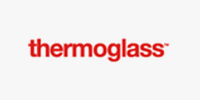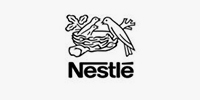Why is it written "This PET bottle is only for filling this product, please do not reuse it"?
The full name of PET plastic is polyethylene terephthalate. The masterbatch is a highly transparent plastic with good processing performance and can be processed directly without additives.
And DEHP is also written as DOP, its full name is diisooctyl phthalate (or more professionally bis(2-ethyl)hexyl phthalate), it doesn’t matter if you don’t know, but it’s actually a plasticizer .
The reason for listing such a mouthful full name is to note that in the above two full names, many words are similar, such as "phthalic acid" and "ester". However, chemically speaking, PET and DEHP can be used. It is not a kind of substance (polymers and small molecules), and there is no overlap in applications. I have seen many non-professionals because they have seen their chemical names and confused the concepts, and then fabricated them. "PET plastics may release the plasticizer DEHP" rumors.
Of course, some people questioned that plasticizers are not used in plastics. PET is plastic. How can plasticizers be unnecessary?
This is because there are many kinds of plastics, and plasticizers must be used (in fact, it is only translated into plasticizer in Taiwan and the term plasticizer used in mainland China). The plastics are mainly PVC and PVDC. The former is widely used, from tablecloths, shoe soles to water pipes. There are also cling films used, which are very easy to identify, that is, when using a fire, there is no flame, and the fire is self-extinguishing. Most other plastics are relatively easy to burn. There are a few other plastics that may need plasticizers, such as the tougheners mentioned in epoxy resins, some of which are actually plasticizers. The purpose of plasticizers is to make plastics easy to process. As mentioned earlier, PET has good processing properties, so there is no need to add plasticizers, and so-called DEHP is not included.
Then, some people say that there is no need, but it does not mean not to add.
Although I can’t talk about escalation, I obviously don’t understand the plastics industry process. Plastic processing requires very strict additives. Therefore, the plastic formulator is a big job, and it earns an annual salary of three to five million. Not surprising at all, but mostly senior engineers. Compressing the types of additives and simplifying the addition steps can greatly save costs for the plastics processing industry. Therefore, in order to improve performance, the use of more additives is only at the level of ordinary engineers. The reason why Danes are large is because they also do subtraction— —The purpose of introducing this background is to show that in this industry, companies will spend more money on technology to reduce additives. Adding an additive that has no difference in performance is basically a brain injury. Moreover, DEHP is not much cheaper than PET, and it cannot achieve the cost reduction effect of mixing fish eyes with pearls. In addition, not just talking about the plastics industry, any manufacturing industry wants to purchase fewer categories.
So, in the final analysis, a plastic that does not contain DEHP at all, there is no need to worry about the so-called release.
The second point to be clearly stated is that for plastics added with plasticizers, such as PVC, the release time is not 10 months.
The release of the adjuvant is a continuous process. Unless it is a sudden change in the external environment, such as radiation, burning, dissolution, etc., it will not happen in the first 10 months, and suddenly it will be harmful after 10 months. Therefore, this one is also an out-and-out rumor, and it is very unprofessional.
So, does the 10-month period mean reaching a certain threshold?
No, the main consideration for the release of additives is not time, but the nature of the liquid in the bottle, temperature and other factors. To give a simple analogy, some toxic substances, if you use wine to defoam, the poison will be extracted quickly In the wine, it takes a few minutes, but there is no way to change it into water to extract the poison. There are many materials for lotion, most of them contain surfactants, some contain cyclohexane, some contain ethanol, and some contain aldehydes and ethers. Ignore these differences and talk about the 10-month period. Isn’t that nonsense?
Another point to be clarified is that DEHP is very harmful and its carcinogenicity has not been confirmed.
Therefore, even if it contains a certain kind of harmful substance, it is not reliable to say what will happen in a few months.
Finally, there are issues to be aware of when using PET.
Let me start with the conclusion. It is recommended to drink glass bottles when drinking acidic beverages such as Sprite and Coke.
Why? We say that PET is a very safe plastic, but we have overlooked one point. The general process of PET production uses antimony catalysts. Antimony is a heavy metal that is not too harmful within the scope of the current technology. (Do not lift the bar at this point). According to the results of the experiment, the residual antimony is not dangerous to release in neutral and alkaline conditions, but under acidic conditions, such as pH 3-4, the release rate can be about an order of magnitude higher than that under neutral conditions. And close to the FDA recommended threshold
And we also know that the acidity of Sprite and Coke is relatively strong, the pH is 3-4, and some varieties are lower than 3. So from this perspective, it is not appropriate to use PET bottles for acidic beverages, but it is not necessary. Too worried. In addition, many companies have begun to produce PET plastics without antimony.
It is not suitable to use PET at high temperature. It does not mean that harmful substances will be released, but it will be deformed.
As for the statement that you can't put oil or wine in the question, this is also a product of half-understanding and speciousness. PET is used to hold oil and wine too common. At present, most edible oils are packaged in PET, and many bulk wines are also packaged in PET. It is indeed not recommended to use PET to encapsulate oil or wine from a professional perspective. It is not because of concerns about dissolution ( Extraction) or something, but because oil and wine are prone to deterioration under light conditions, which is not conducive to preservation.





























